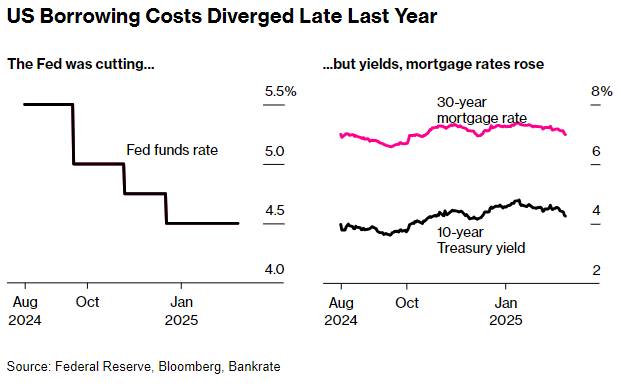Chart of the Day - Lower Rates Don't Always Means Lower Mortgage Rates

Mobile Banking: Safe, Secure, Simple!
Download our mobile app today. Check out our step-by-step video instructions to get started.
Plan Today. Protect Tomorrow. Attend an Educational Estate-Planning Seminar

Today’s Chart of the Day was shared by my colleague, and fellow Portfolio Manger, Angie Parsons. It's a from Bloomberg article showing the changes in the short-term Fed funds rate, 30-year mortgage rates and 10-year Treasury rates since August 2024.
The Fed funds rate is a short-term rate that banks charge for lending excess cash overnight and is a key tool the uses Federal Reserve to manage the money supply.
The chart shows when the Fed cuts the Fed fund rate it doesn’t always lead to lower mortgage rates. This is because 30-year mortgage rates follow the longer term 10-year Treasury rate, which is determined by the market's longer-term expectations of inflation, economic growth, and consumer spending.
While 10-Year Treasury rates and mortgage rates tend to move in similar patterns, they have different risk profiles. Since mortgages have higher risks than Treasury bonds, they require a higher rate, which is historically 1.70% to 2.25% (2% as a rule of thumb) above the 10-year Treasury rate.

Samuel serves as Senior Vice President, Chief Investment Officer for the Crews family of banks. He manages the individual investment holdings of his clients, including individuals, families, foundations, and institutions throughout the State of Florida. Samuel has been involved in banking since 1996 and has more than 20 years experience working in wealth management.
Investments are not a deposit or other obligation of, or guaranteed by, the bank, are not FDIC insured, not insured by any federal government agency, and are subject to investment risks, including possible loss of principal.

